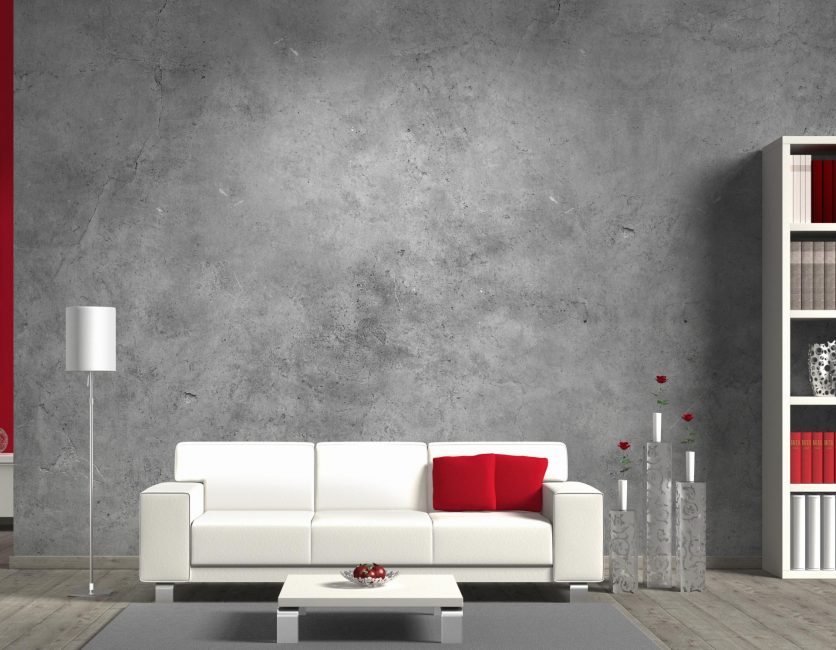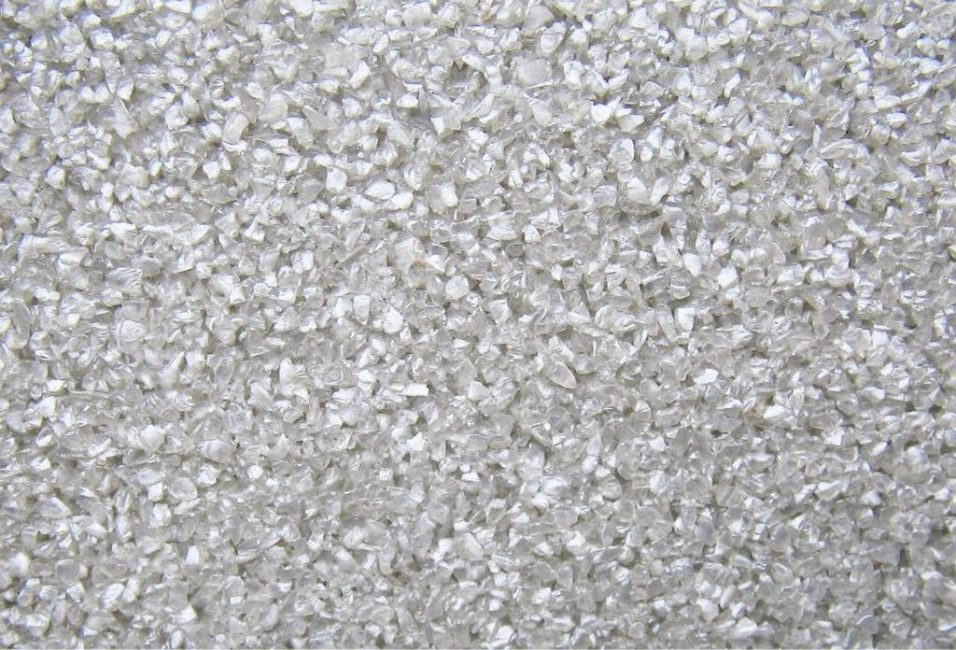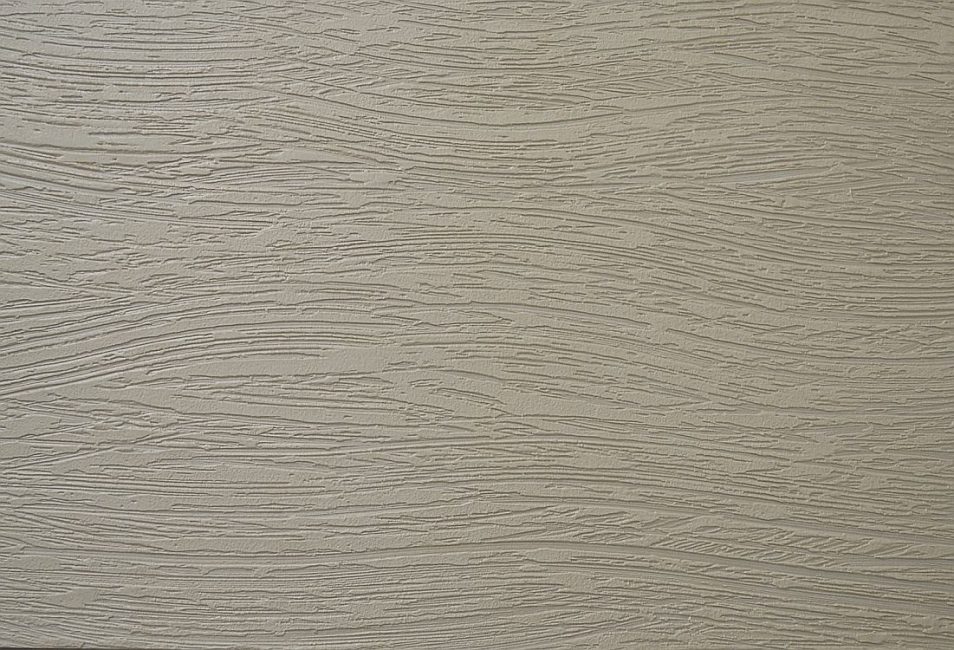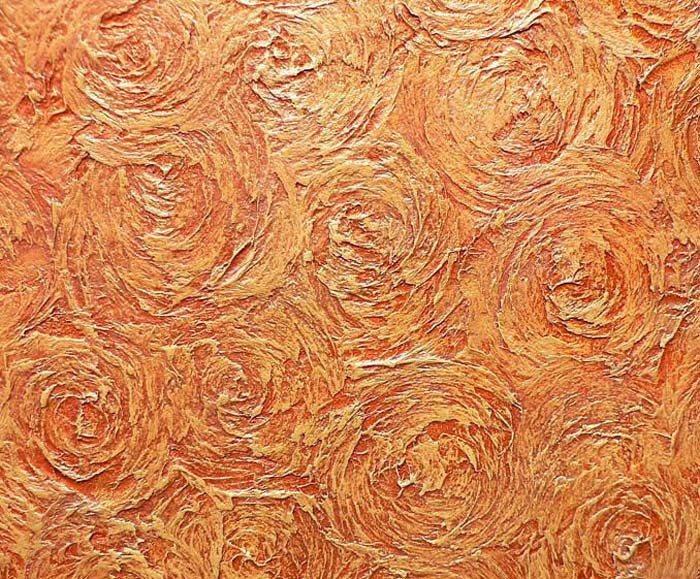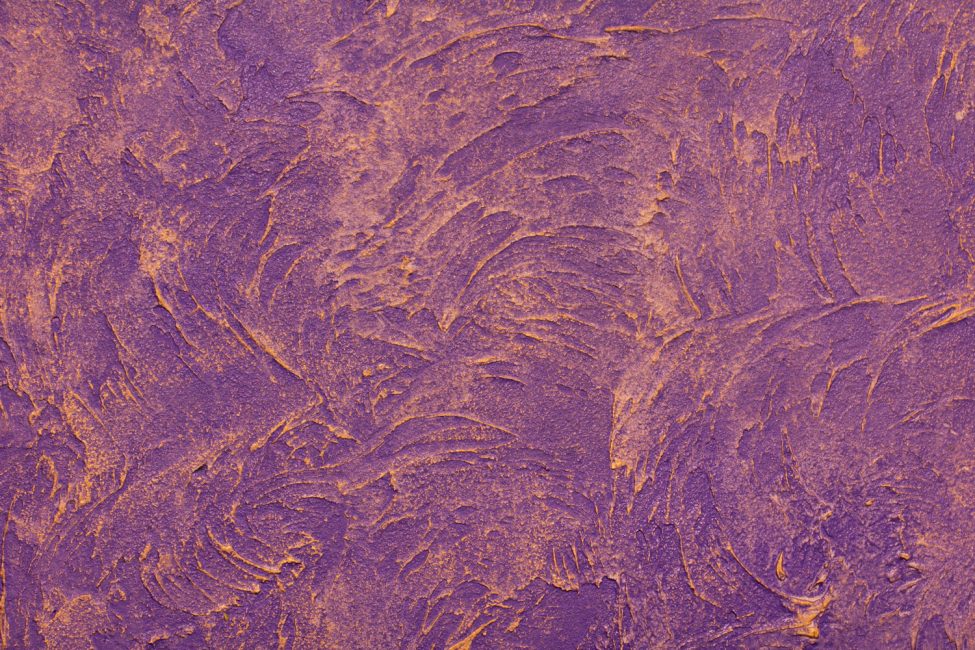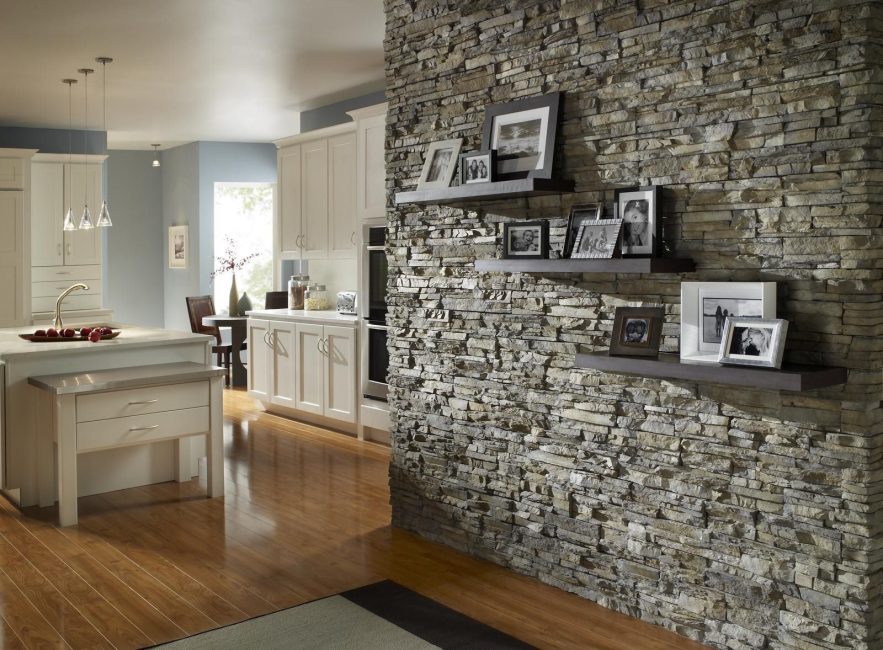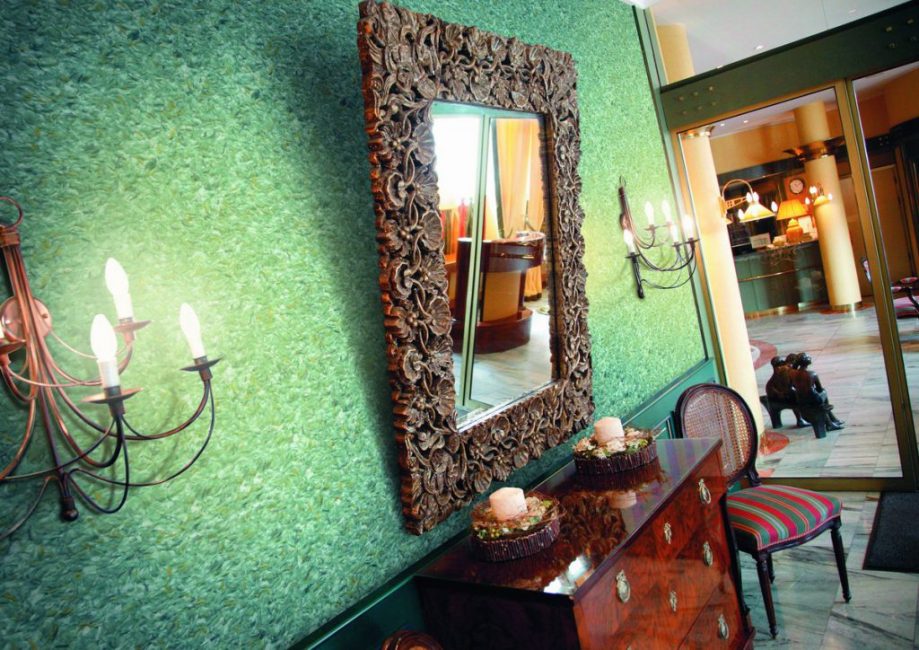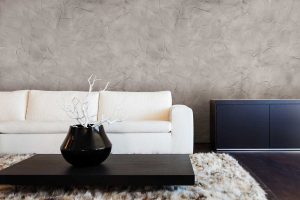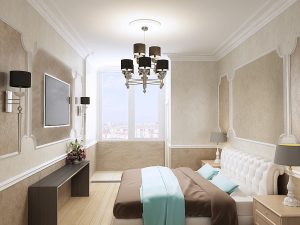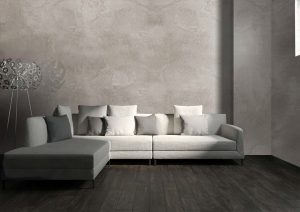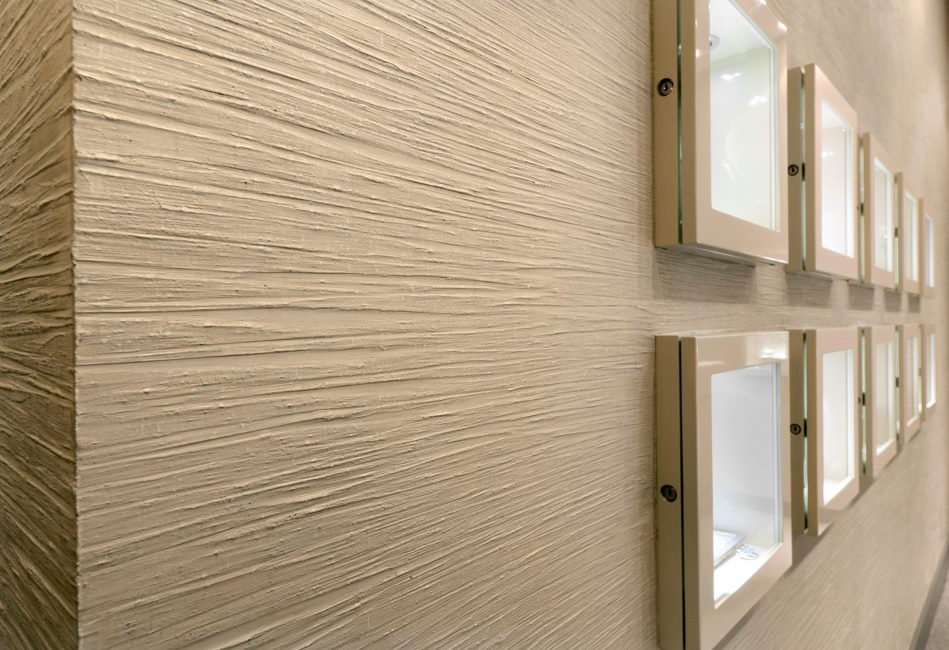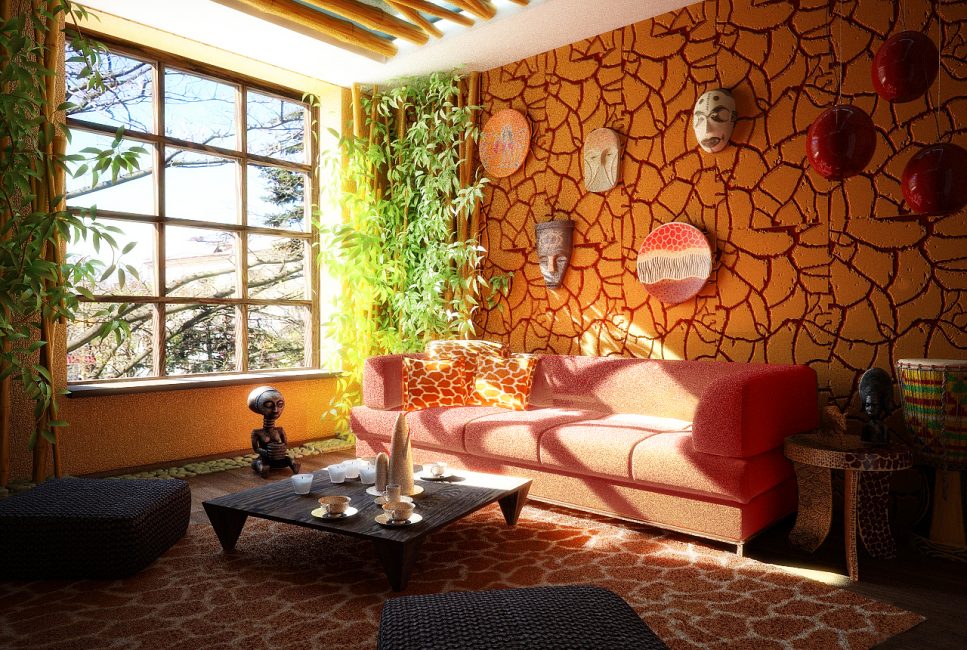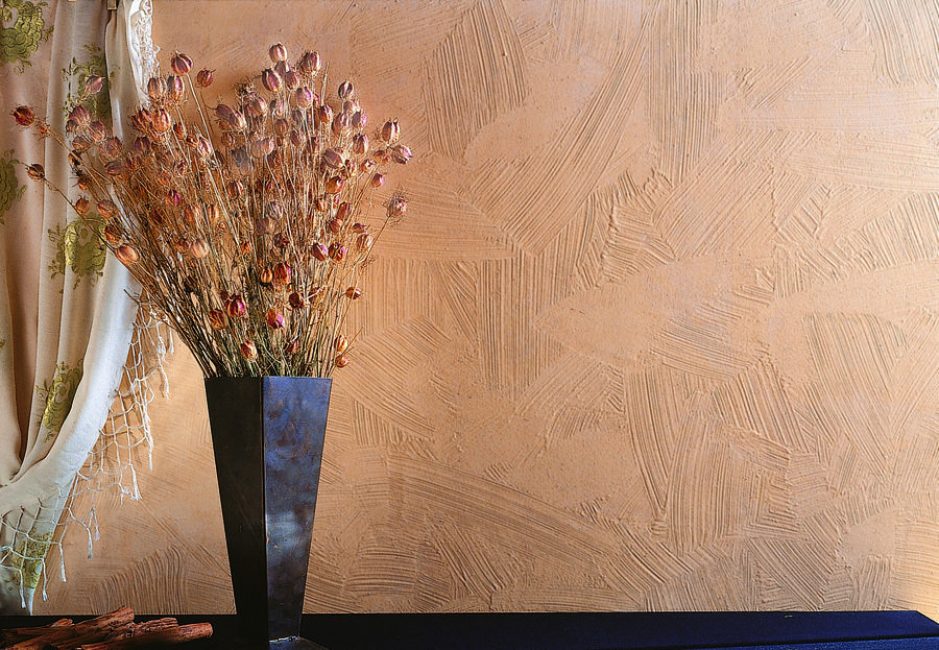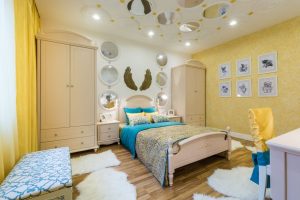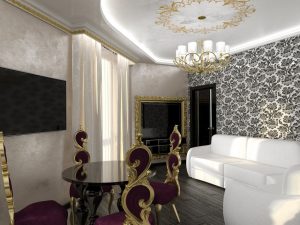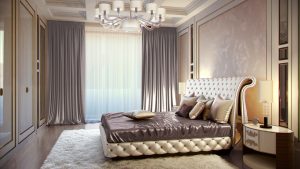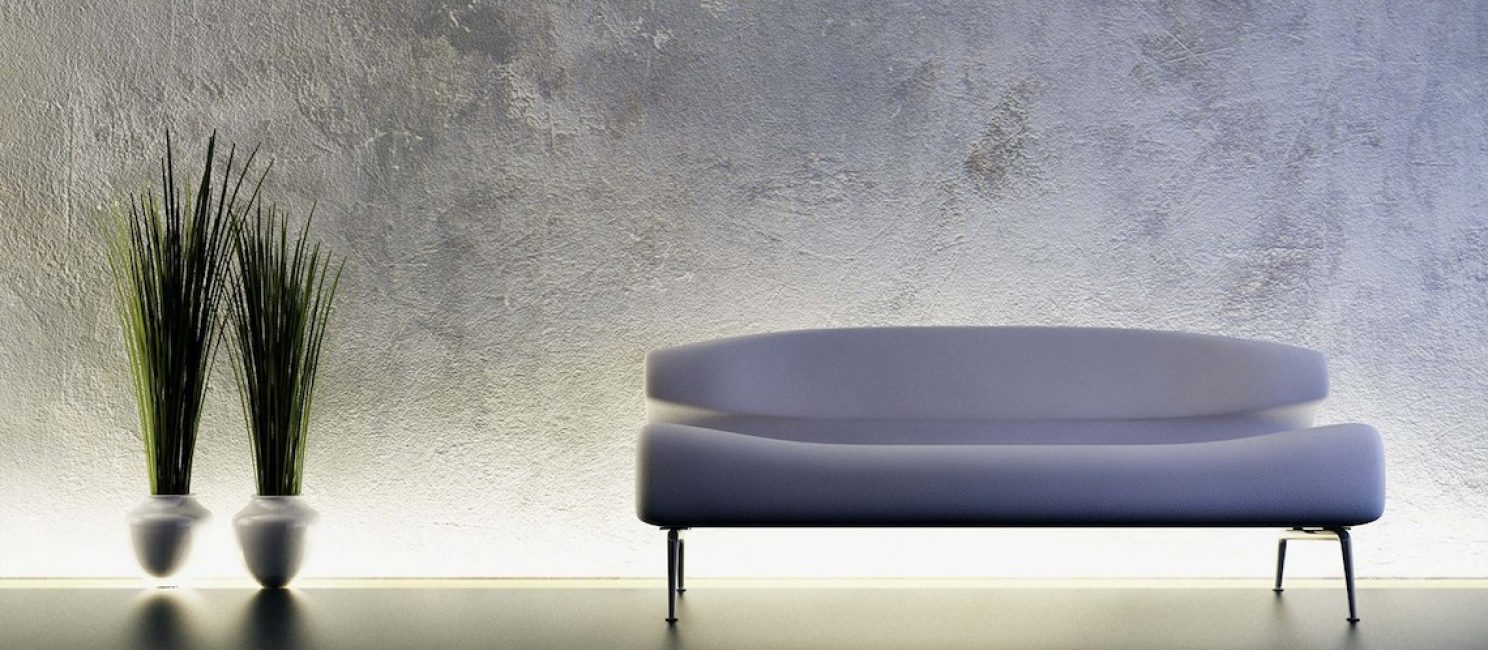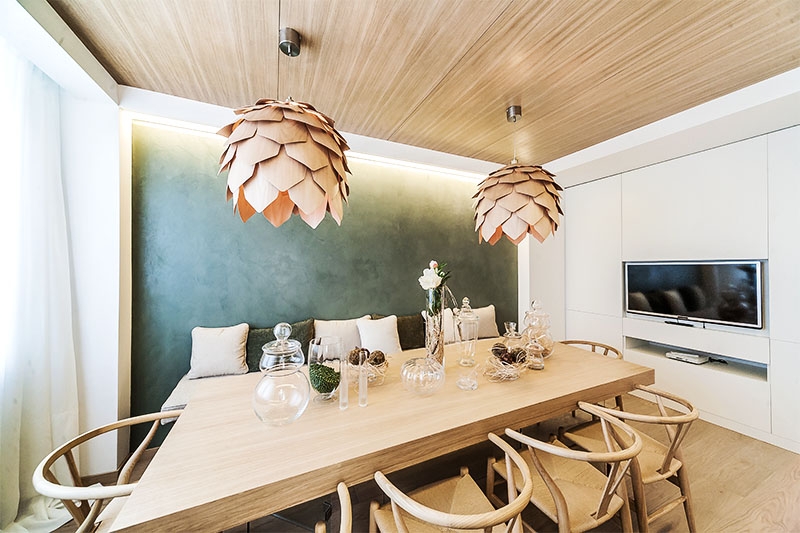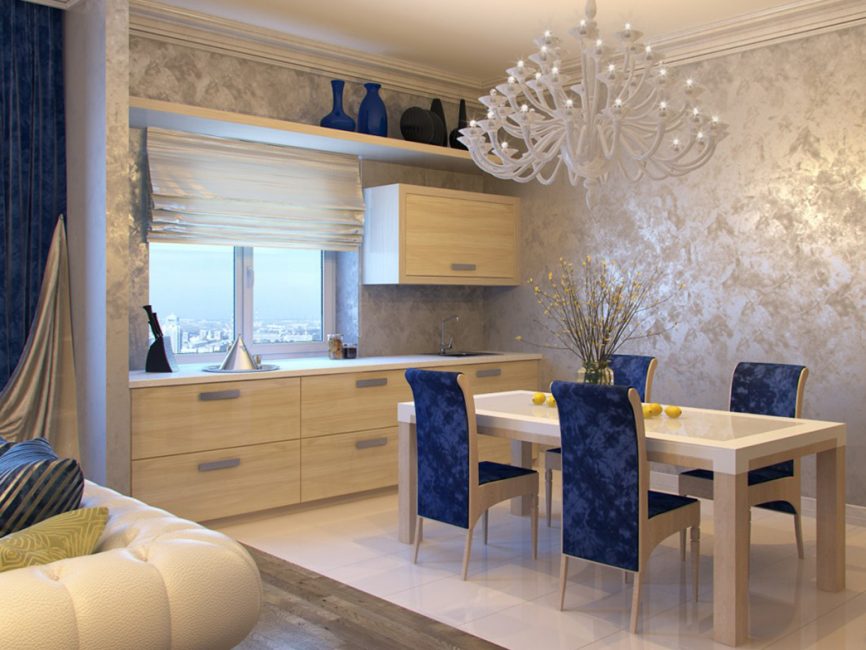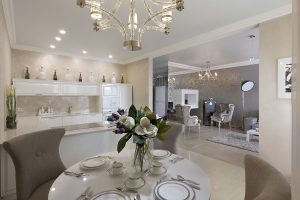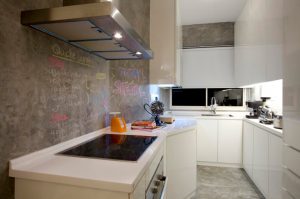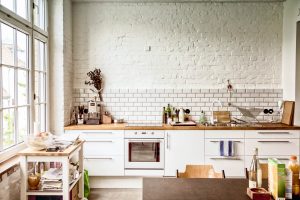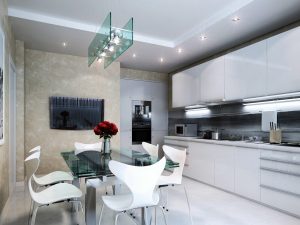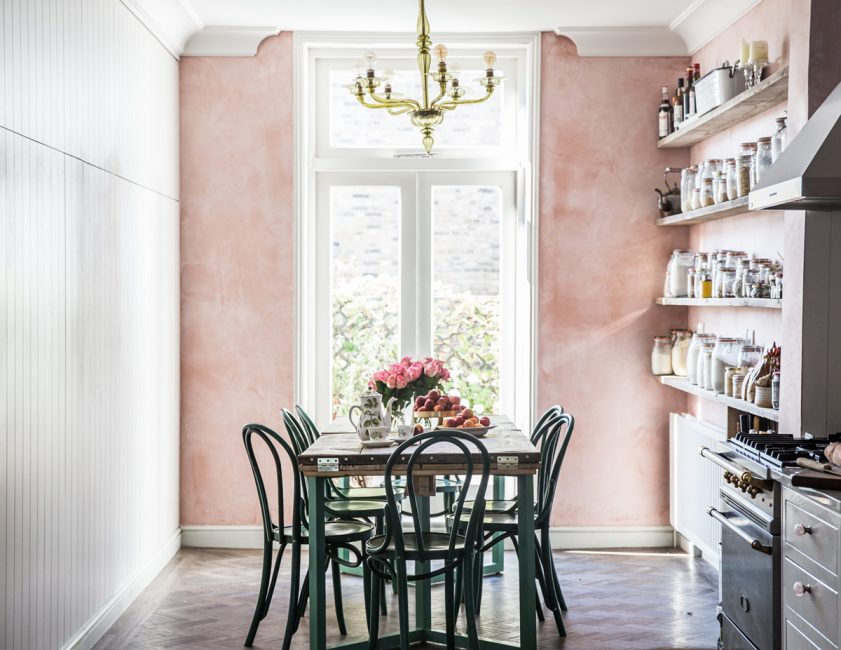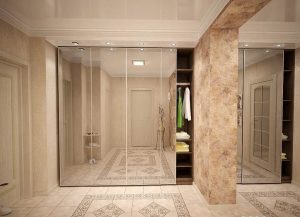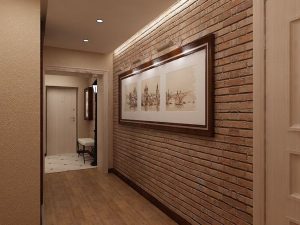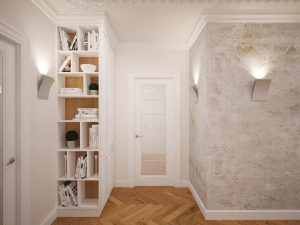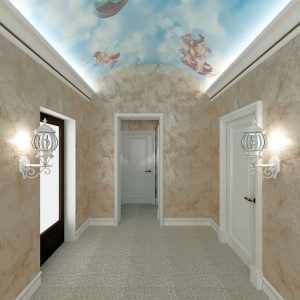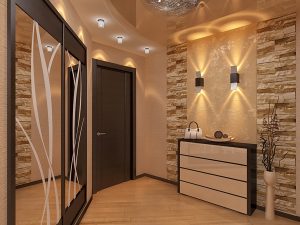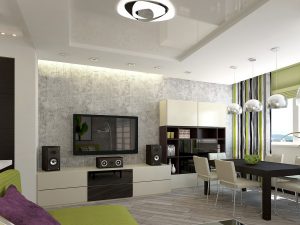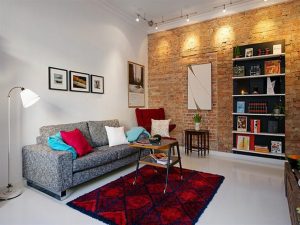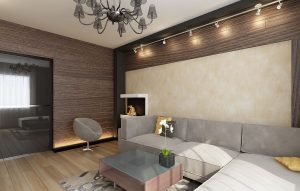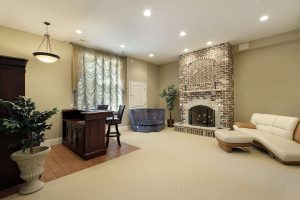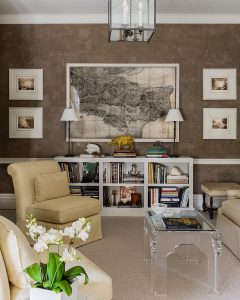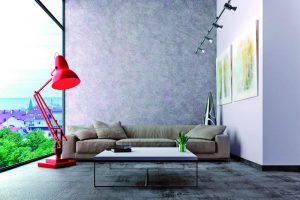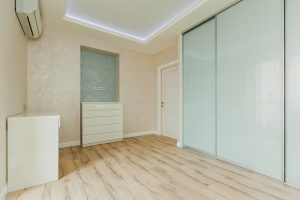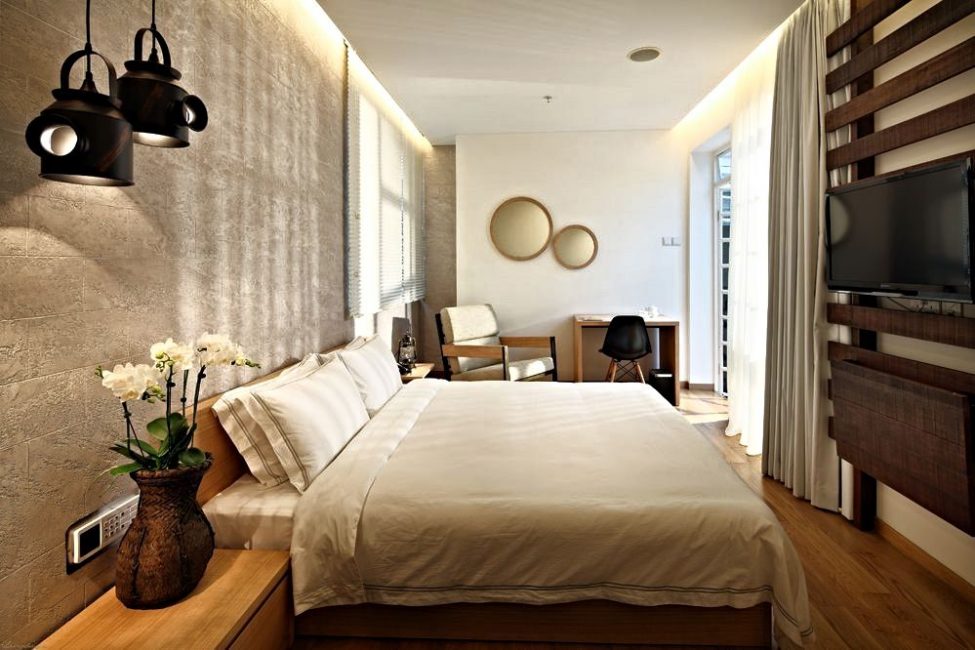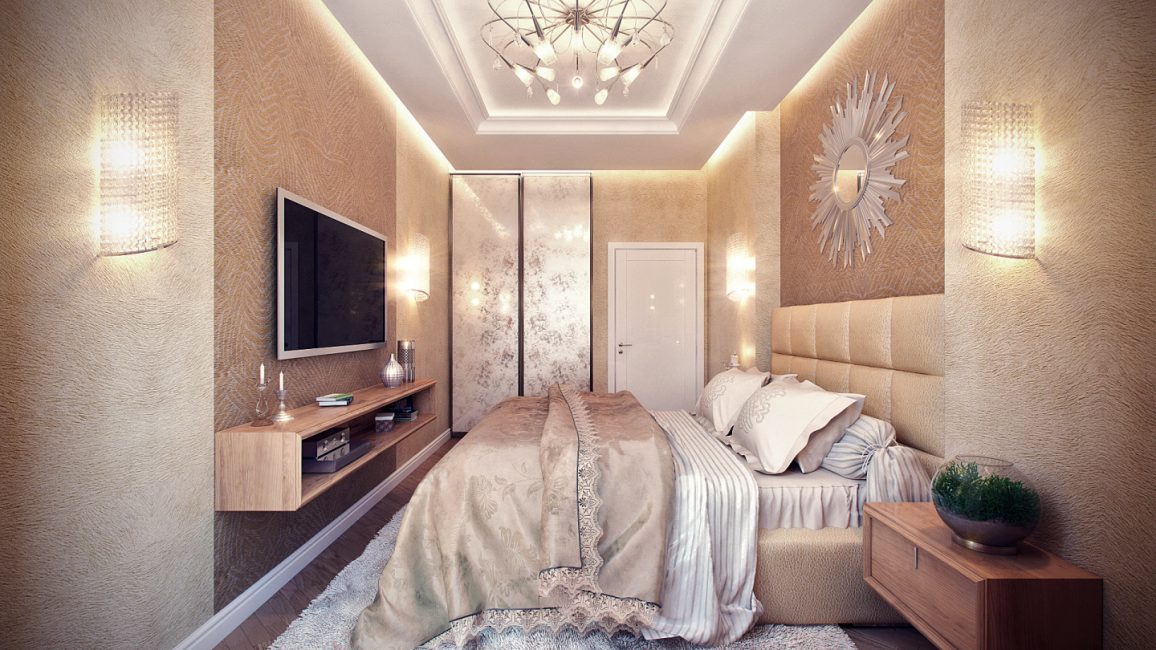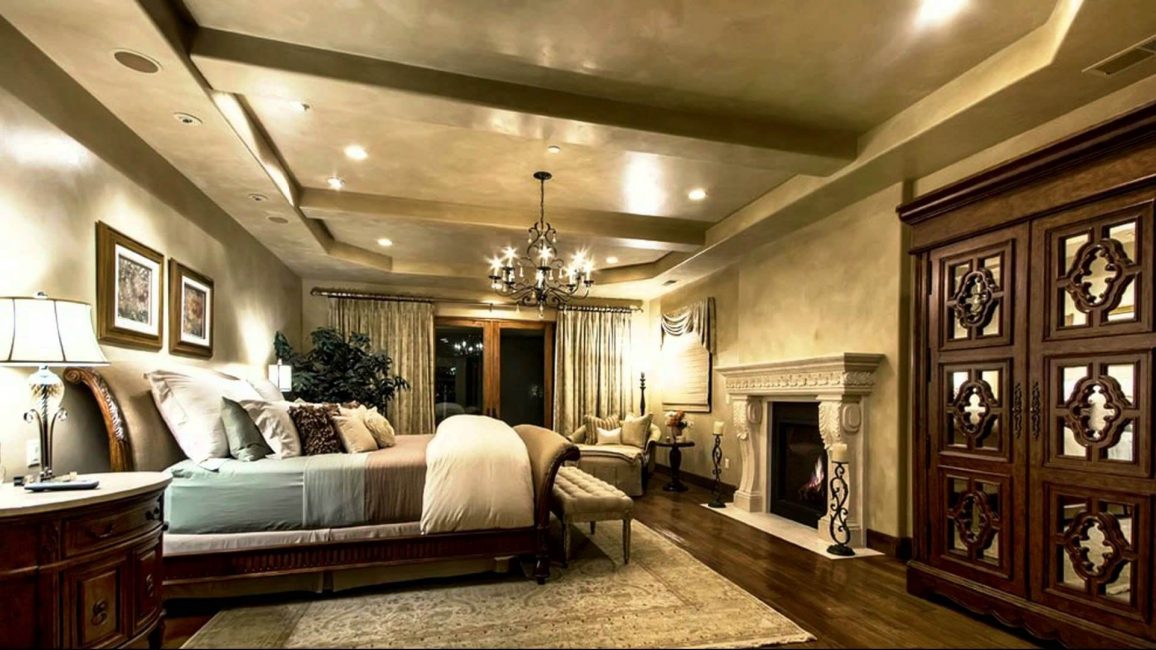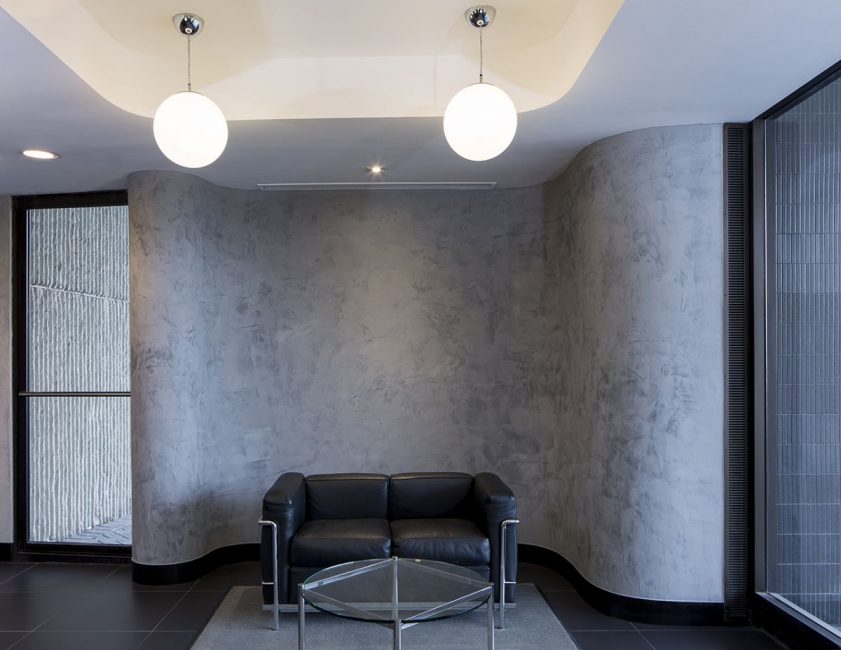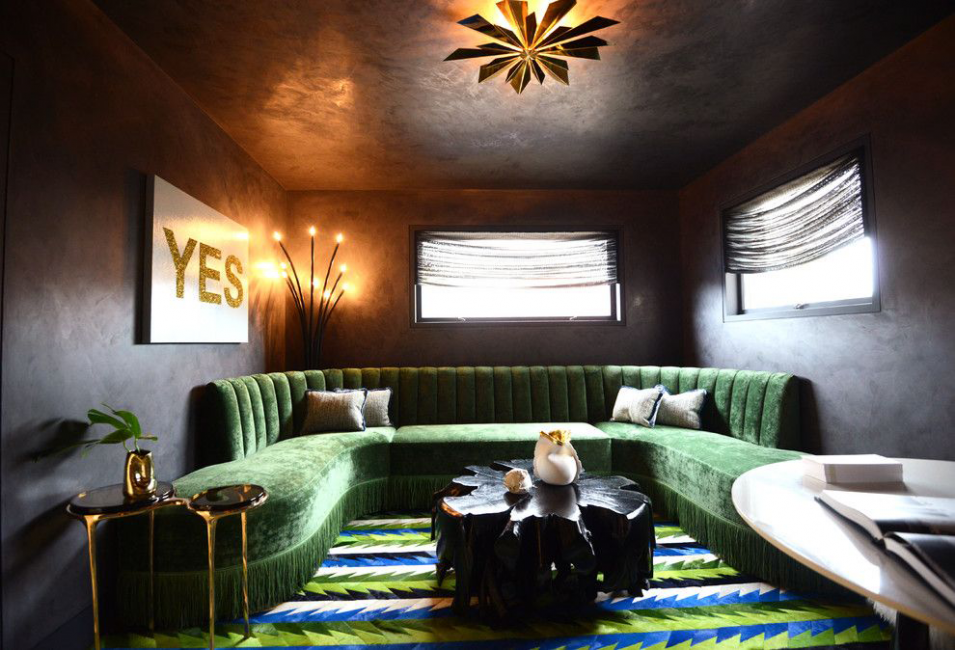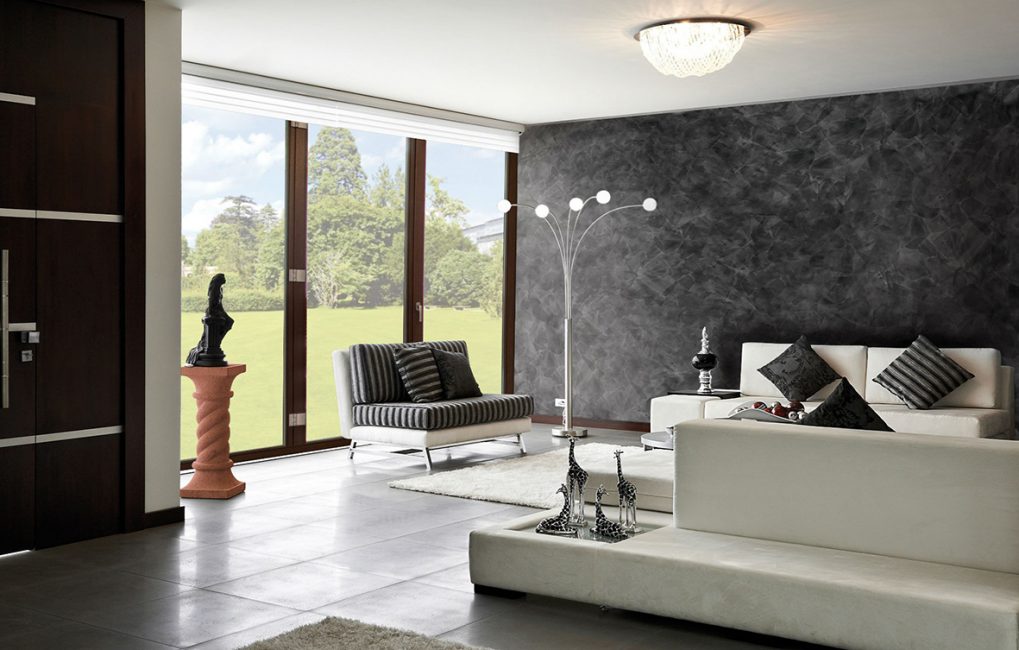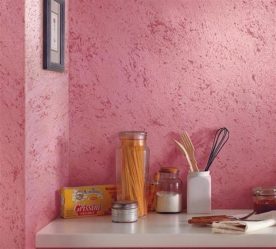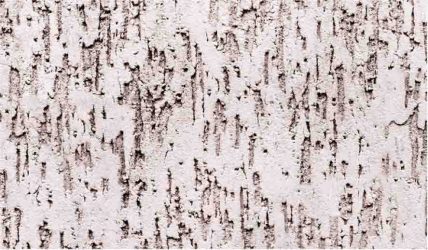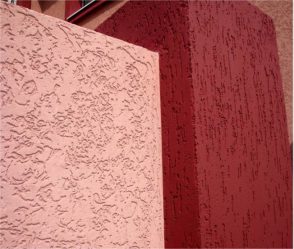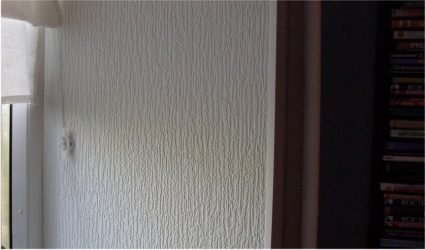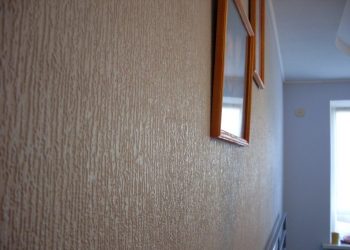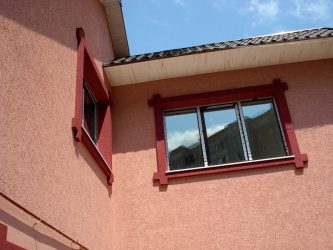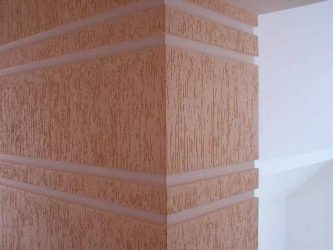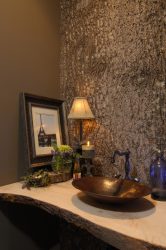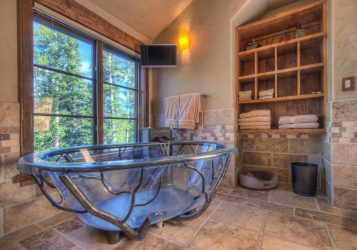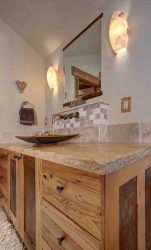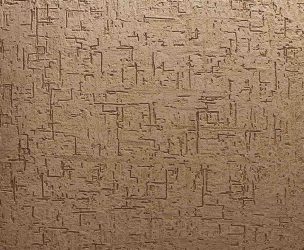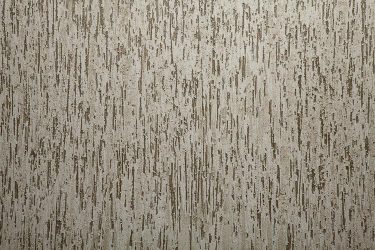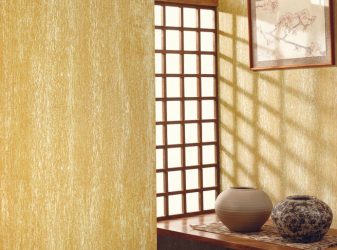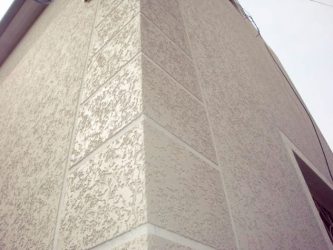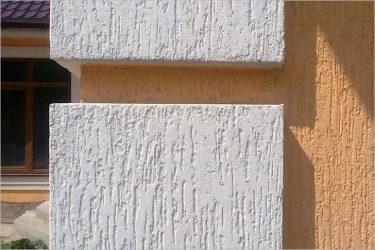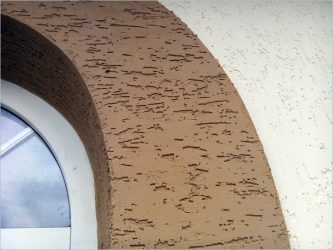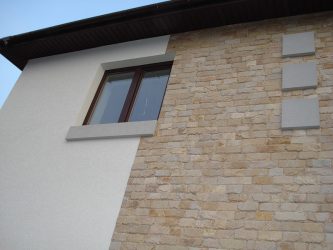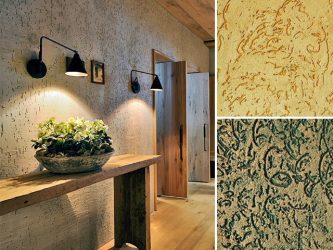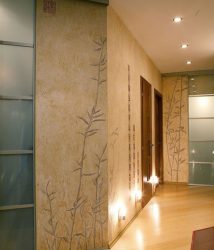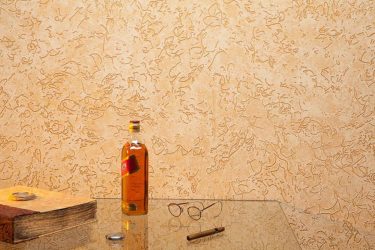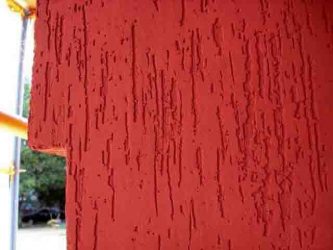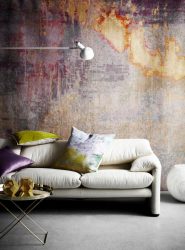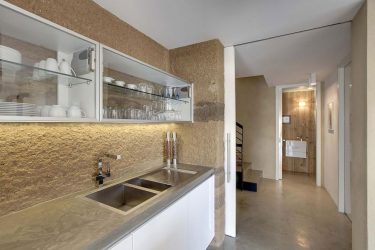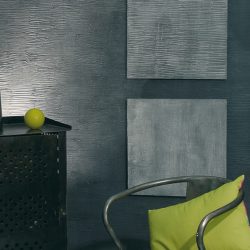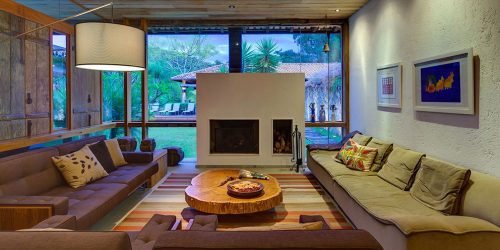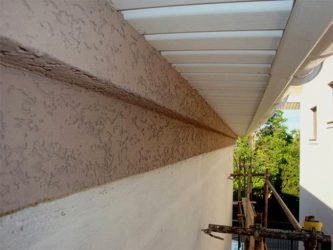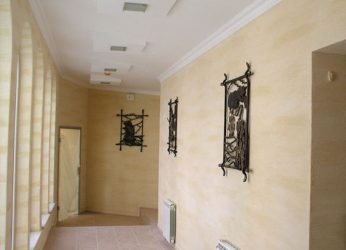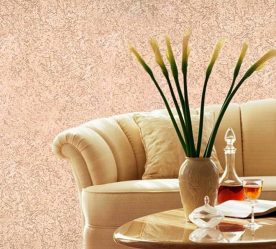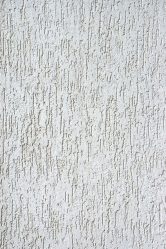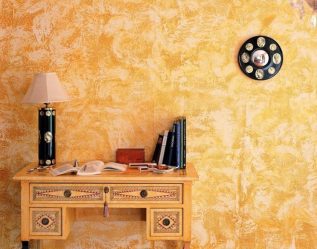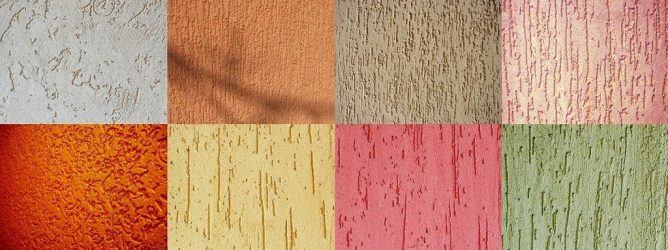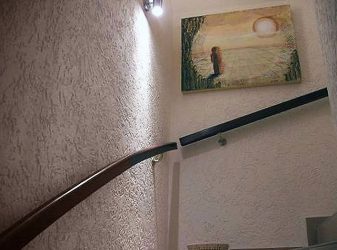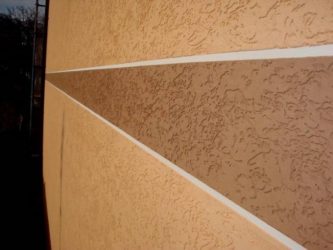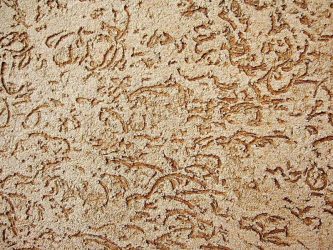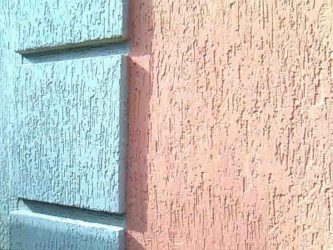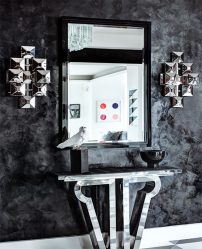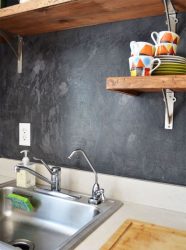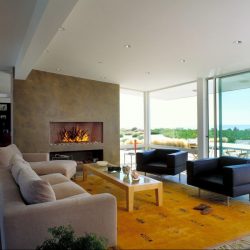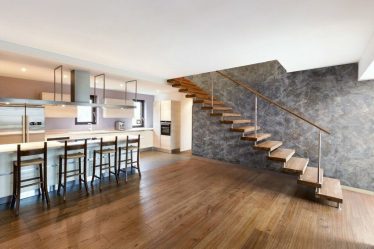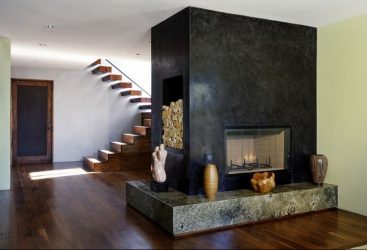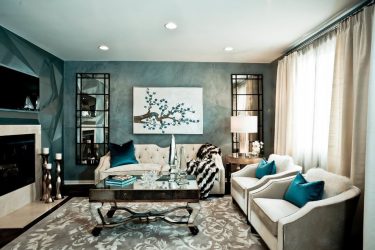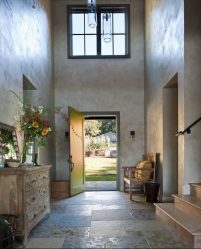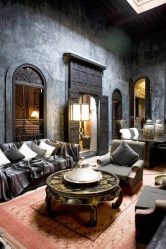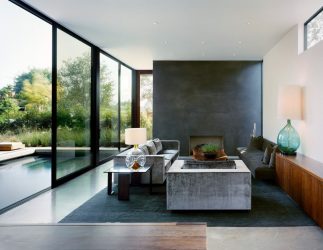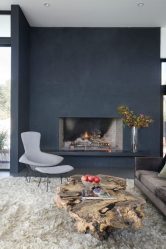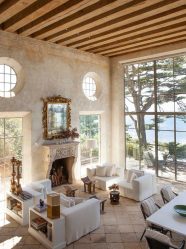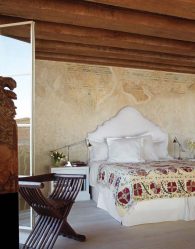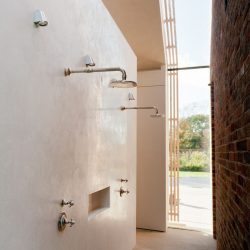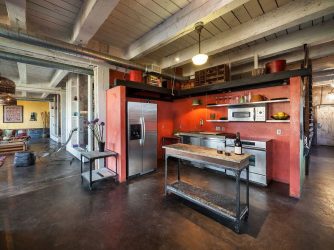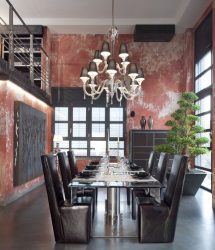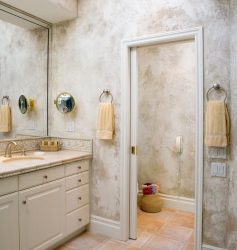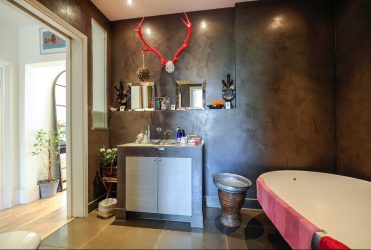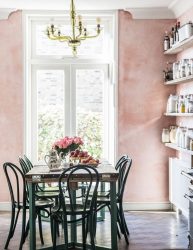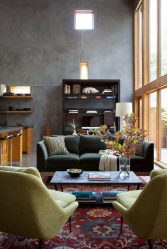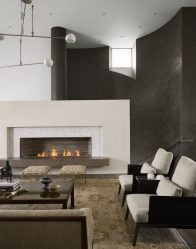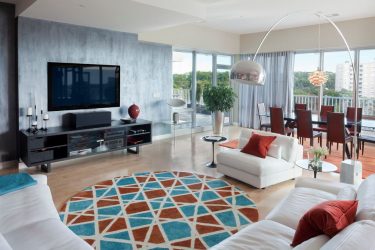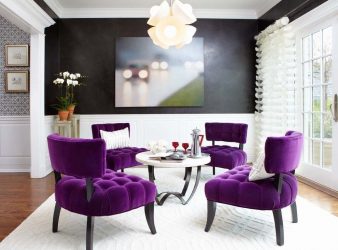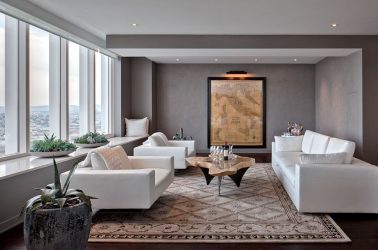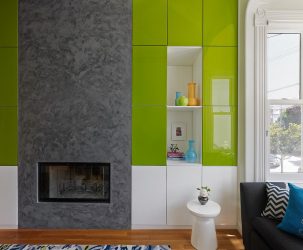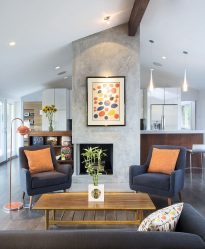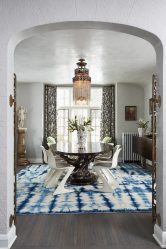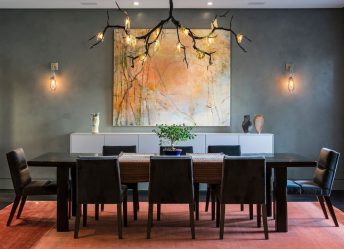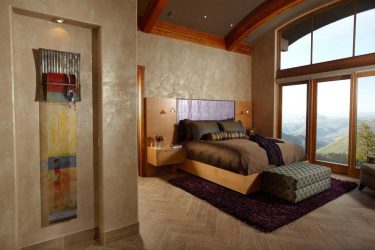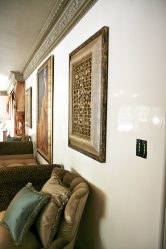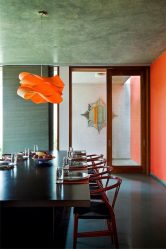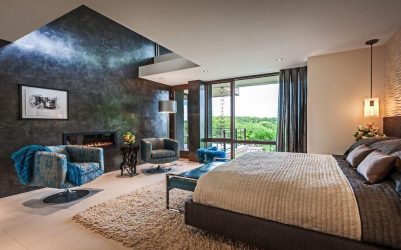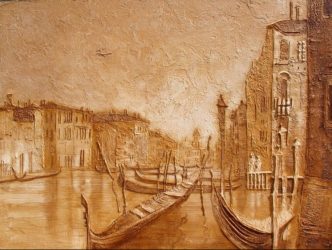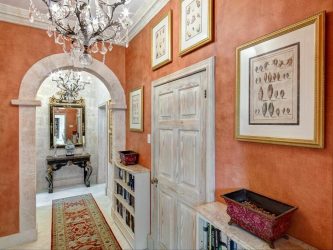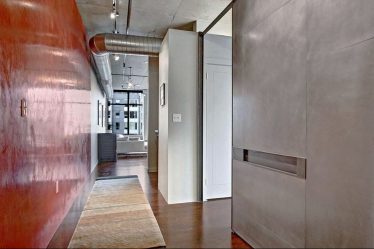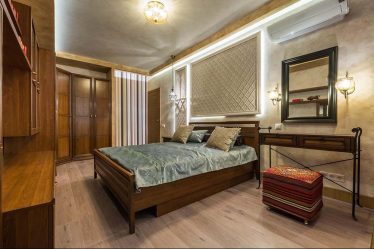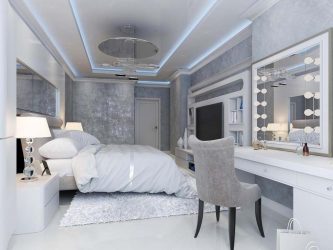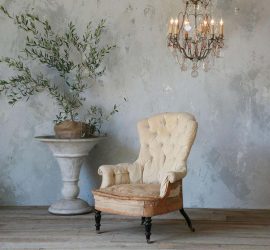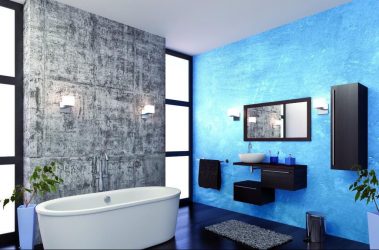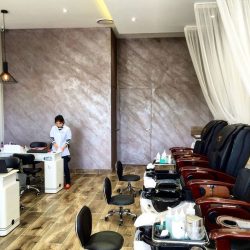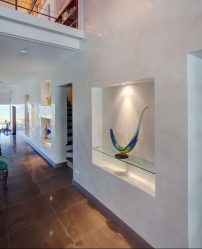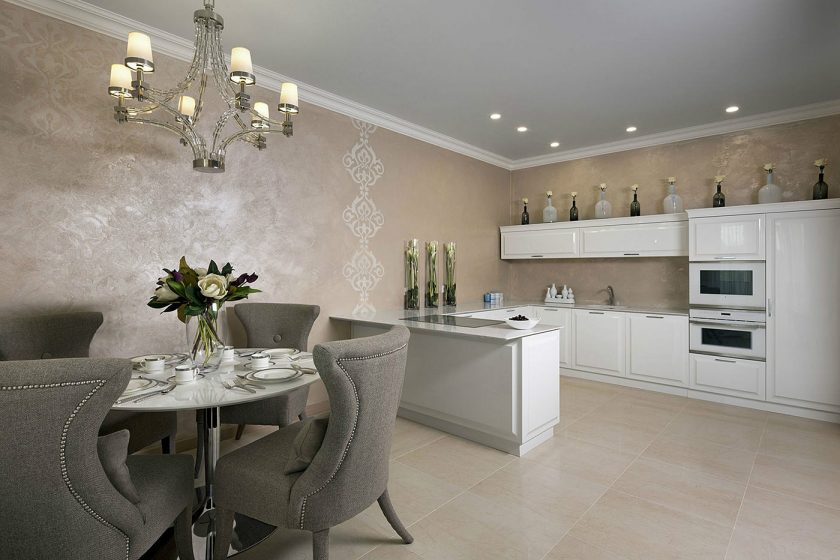
Decorative plaster can radically transform housing. Moreover, it can be combined with other types of cladding, painted in different colors, apply any structure.
Content:
Vegetable patterns, ceiling moldings, old masonry, Venetian, large waves - all this and much more can be created from textured plaster.
Varieties of composition
The structural nature of the coating makes it possible to create different patterns and effects. Never mind ceilingthis or wall, bathroom or kitchen, living room or bedroom, children or entrance hall. Color or their combinations, texture or pattern is the prerogative of the master who works with the mixture. The main thing is that everything is combined with style, and not look pretentious and defiant. The composition distinguishes the following types of textured plaster:
return to menu ↑Mineral
Silicone
This is a ready-to-use mixture, it no longer needs to be diluted. it is good and easy to fit absolutely on any surface, be it wallpaper under plaster, old rough walls or brick. It has good moisture resistance, suitable for corridors, halls, bathrooms or kitchens. It can even be used on unprepared surfaces.
return to menu ↑Acrylic
Liquid material can be applied immediately after opening the package anywhere. It has a uniquely good covering ability and high decorative properties. Recommended for lining living rooms, bedrooms, children. The advantage of this material is a wide range of colors. Similar to this type and polymer plaster.
return to menu ↑Silicate
Textured Varieties
Any type of decorative plaster can be used to create a smooth surface or to act as a material for creativity. They are made of relief compositions, patterns, from simple to the most complex, including panels for decorations.
return to menu ↑Graphite
Thin-layer concrete which includes sand (sand concrete). With it, you can create a wooden coating, porcelain, leather, decorative a rock and fabric. It is also used to create volumetric or floristic motifs. Even monumental images can be recreated from it.. The material is very good for the decoration of walls in the style of the Middle Ages.
return to menu ↑Flock
Decorative trim, designed to recreate a soft structure like a natural fabric. Very popular. She trim children's rooms, bedrooms and other rooms, where the priority is considered a warm atmosphere and comfort. Mix consists of acrylic multi-colored flakes. This is the main feature of flock plaster. With it you can alternate between different areas of color. The joints are not formed, the coating looks solid. This feature of flock plaster allows you to draw, for example, children in different colors easily and naturally.
return to menu ↑Venetian
Considered a queen among other types of plaster. It is used in their projects by most designers. With its help imitate translucent marble tile, rocks and other textures. The composition of this mixture has a unique visual depth. It is suitable for any premises:
- children;
- living rooms;
- hallways;
- kitchens
It can be combined with any other materials and finishes.
Stone crumb
I think that this method of facing also deserves attention. Stone crumb from small to medium fraction (0.5-5 mm) in a special binder can work wonders. The manufacturer (stones) can take marble, granite or quartz. This coating can be stylishly finished:
- arched openings;
- corners;
- niche;
- architectural elements.
The obvious, cold appearance of the coating in combination with another type looks just gorgeous.
return to menu ↑Bark beetle
Although bark beetle is used mainly for decoration facades, in the passers-by of some apartments it can also be found. A pleasant atmosphere will always reign in the coated bark beetle, which is conducive to rest and peace. The coating is endowed with high strength, keeps for a long time, does not lose its original appearance throughout the entire life cycle. practicality, durability. I can say that those who use it chase two hares and successfully catch up with both.
return to menu ↑Africa
A coating imitating snake or crocodile skin. Possessing a special decorative effect, it is often used in the decoration of interiors, emphasizing ethnic color. Looks pretty expensive. From above becomes covered with a gliter, paint or wax.
return to menu ↑Marseilles wax
Used by designers to impart a rocky surface, antique masonry or sandstone. The color scheme is light sand. Such elements make the interior complete by adding comfort and warmth to the room. Trim it, usually doorways or certain sections of the walls.
return to menu ↑Silk effect
Amazingly beautiful type of plaster, resembling silk with unobtrusive drawings and patterns. The interior looks elegant and rich in touch gives tactile sensations.
Decorative plaster differs from the traditional in that it contains in the composition of the substance, which give the coating uneven, decorative forms and textures. As a basis, manufacturers use:
- quartz;
- foil;
- mica;
- silk fibers.
It is they who recreate beautiful patterns on wall surfaces. Both that, and another will add to an interior of dynamism. Radically change the look. Will make the room really stylish.
return to menu ↑Color in personal choice and style
Emphasis is the most famous and most important design trick, which always plays win-win. Especially then, the task is not only to refresh the room, but also to make it stylish, fashionable, to bring a touch of sophistication and wealth. The choice of colors here is in the background, after the choice of material. Color is the mood, emotions and impressions that a person receives from repairs.
He must be in harmony with the style, not annoying, not tiring. The basic choice of the color palette is based on four groups:
- Fresh. Give transparency, purity spirituality.
- Warm. They soothe loved ones, and add to the room comfort, have to rest.
- Saturated. Have a high percentage of coloring matter.
- Calm Soft colors, often with shades of gray. Such a decision brings balance and peace to the house.
How and what kind of plaster can be used in kitchens?
Having made a revolution in the kitchen and in the bathroom, refusing to glue wallpaper for painting and ceramic tiles, you will make them trendy, stylish and unique. This room is considered a visit with an extreme climate in the house, so for the kitchen it is advisable to choose synthetic compositions based on acrylic. Only they are able to withstand changes in temperature, are resistant to the formation of fungal formations, well pass air.
Look at the photo, how can change your kitchen or bath, if you choose decorative plaster as a finish. And no matter what it will be:
- Venetian silk;
- bark beetle;
- velvet, classic travertine;
- marble;
- microcement.
Venetian decorative plaster is especially popular in the decoration of kitchens.
It is used in the creation of such styles as:
- Mauritanian;
- high tech;
- country music;
- vintage;
- retro.
Here used restrained smooth textures.
- A Venetian looks good in combination with an exquisite panel and a white headset. The coating can be applied on all four walls or on separately selected fragments.
- It will be creative to look at an option where in the kitchen the ceiling surface will not be smooth, but textured, and the walls will be smooth monochromatic or two-color. Here the color of the headset is chosen for personal preference. On the ceilings, you can even recreate the imitation of clouds or picture motifs.
- It will be interesting to look at the option where such coverage of the working area from the dining area.
- The combination of decorative brick coating with a smooth surface also looks original. This kitchen will look spectacular and stylish.
- The photo shows how a combination of artificial stone and bark beetle looks in the small kitchen. The colors can be chosen any not only those that were used for the example.
- Stucco for concrete is often used in kitchens. It looks quite decent and original. In the area of the apron, you can use transparent or mirror wall panels. They will not spoil the general appearance, they will serve as a reliable protection for the coating.
- As the color, you can leave the same, concrete. True, even better will look on deep gray smears of different shades, for example, black, white or smears of whitish hair, with shades of rust or metallic luster.
There are many options for using textured coatings. They can be finished only with arches, niches, ledges or all walls together with these architectural elements. You can make monophonic or combine colors.
return to menu ↑Little tricks in the design of kitchens
I hope these tips will help you in the design of the kitchen space:
- If the kitchen has niches, ventilation boxes, openings, decorate them with patterned plaster.
- If you have a fireplace or a stove in your house, veneer them with brick or natural stone plaster, in addition to the aesthetic and fashionable appearance, you will achieve another effect - under this coating there will be chipped off and cracks on them.
- If you want to make a kitchen in the style of maximalism, use a smooth wall covering in your work.
- If your kitchen is light and spacious, and the furniture set is exclusive, use Venetian plaster in your work.
Apron especially susceptible to temperature extremes, so it can be revetted with ceramic tiles. Cover the dining area as much as possible with decorative plaster, this will add comfort.
return to menu ↑Use in the hallway
Corridor, hallway, hall are considered, if not the main, then at least important in the house. They are called a showcase, introducing guests to the apartment, style tastes and preferences of the owners. Therefore, it is necessary to make out worthily and correctly. From this, the guests formed a first impression.
- Smooth surfaces with drawings, thinly covering the walls are best suited for a small corridor.
- In order to visually enlarge the space, it is better to take as a basis decorative plaster of light colors with a smooth or finely granulated texture and an inconspicuous pattern or pattern in the center.
- Any relief visually creates volume, so a small area of the room will hide.
- In combination with a Venetian, you can use gold stucco, true, if this does not contradict the style project.
- For large hallways and halls, I recommend choosing a Venetian. So your space will play in a new way, it will not look like an ordinary room, but as a real palace or the main entrance.
- Plastering imitating brickwork or decorative stone looks gorgeous in the corridors.
- For interiors in the style of pop art, three-dimensional drawings made in bright colors are best suited.
- Picturesque paintings on the background of decorative plaster, complement the image, give elegance to the style of a classic.
- Delicate colors of the walls of textured plaster are the best able to revive the room corridor in Provencal style.
- Elegant in the interior of the corridor looks Venetian with the effect of wet silk.It can be safely combined with glass, wood or metal.
Corridors and hallways are deprived of a source of natural lighting, so they need to use a bright palette, bright colors. It will be correct to use mirrors in them, especially if they have a small usable area.
Natural muted tones will help create an atmosphere of tranquility and tranquility in the near and the corridors.
return to menu ↑Ways to design living rooms
Here, planning to repair, we set ourselves two main tasks - to create comfort and convenience, conducive to relaxation and relaxation. Apparently, therefore, the choice of finishing material for wall surfaces is a very important and difficult task.
- Decorative plaster in the design project of living rooms may well serve as the main finish. It can also be combined with stone by panelsand with a tree and with wallpaper for painting.
- Here is a living room where not only wall surfaces are plastered, but also a ceiling framed with stucco. No one will argue with the fact that it looks original and elegant.
- If the task is to visually increase the usable area, then the work should use a mixture of bright colors, even better with a good reflective effect.
- With plastering Marseilles wax, you can make such ornaments and imitation of wooden coatings, as well as imitation of brickwork and stone.
- To recreate the elegant, refined interior of the living room, choose Venetian plaster with a silver or golden sheen.
Velvet and silk walls reflecting particles of light flux look elegant and rich.
- Graphite is very often used by both designers and users. This type of plaster allows you to create texture of aged walls or applications. The living room will also look good in certain areas.
- Africa is a well-known type of decorative plaster with a texture resembling crocodile or snake skin. In the living room in ethnic style will look good and appropriate. Such a finish looks expensive, especially if the top is treated with a layer of glitter, varnish or wax.
- Rustic texture of shabby stone is used in the design of living rooms, created in country style or historical.
- Your living room will only benefit if you decorate the ceiling with patterns, and you combine walls with decorative plaster with areas covered with wallpaper for painting.
- Artificially aged walls can be craquelure plaster or bark beetle. Cracks and scuffs are relevant in classic and retro style.
The combination of several types of coatings in the living room does not make it pretentious and challenging, if it is true to combine colors and match the texture.
I want to note that the traditional monotonous design projects, where the walls of the living room are made in shades of gray, have long gone out of fashion.
How can I make a beautiful bedroom?
Decorating the walls and ceilings of the bedroom is not only a way to prolong the life of the coating as long as possible, it is also a way to create a comfortable atmosphere in it, conducive to relaxation before bedtime. Most often, flock plaster of dark or muted tones is used in such rooms.
- To create a volumetric effect, it is better to choose a material with medium or large fractions.
- Venetian - the perfect cover for the bedroom in a classic style. With its help, you can recreate the natural structure and type of natural stone. The natural color and smoothness of the lines help to calm down, suggest serenity.
- The easiest way to get a trend wall surface under the concrete, to use a ready-made concrete surface. White concrete walls are an interesting solution, but not everyone has this ready-made wall for concrete. A similar effect can be done by yourself, if you use a special plaster.It is no different from traditional concrete with all its characteristic structural effects. Such a coating can have any texture, be satin, matte, uniform or simulate formwork.
Venetian marbled slab in a rich bright green color - a bold decision.
- A win-win option, in my opinion, is considered a coating that mimics the fabric. It can be velvet, wet silk, aged velvet or velor. The texture can be both matte and glossy. What color swings, then the choice is for the owners.
- Originally looks bedroom pistachio color.
- A win-win option, and it is verified, is considered the use of decorative plaster of natural shades.
- Manna coated walls can be made smooth or under a decorative stone. The roughness of the coating here gives a marble crumb.
- Light shades of the coating can be added to the castings by adding pearlescent pigment.
- With wet silk you can create elegant design projects. It will give the walls a smooth and velvety.
- If you cover the walls with latex paint, then on their surface iridescent stains of a rich color palette are formed. This bedroom will look even more beautiful.
- Marseilles wax can decorate the walls under the bark of wood, stones or bricks, if you are satisfied with this design. And covering the walls with wax on top, you can get a glossy look.
- The accent zone in the bedroom is a common and fashionable solution. Here it is not necessary to use the same texture. To accent wall is selected at the head of the bed. So the room is radically modified.
Tips for beginners
If you decide to plaster the walls with textured mixtures, I suggest to listen to the advice of professionals:
- In bark beetle plaster, use special granules in the work. Move them in the desired direction with spatulas.
- To create bas-reliefs, stucco, volumetric decorative figures use plaster compositions, provided that you can do it. Otherwise, you can buy ready-made. They are also full in hardware stores.
- If up to this point you have not had experience and have never worked with decorative plaster, try your strength and capabilities on an inconspicuous section of the wall. balcony, loggia or toilet.
Consider the features of your walls. Textured plaster fits well and without problems on the surface of brick or concrete without prior preparation.
- Take into account the climatic conditions of the room. For example, in the living room, corridor or bedroom you can buy any kind of coverage. And in the bathroom or kitchen, where climatic indicators are unstable, pay attention to silicate mixtures. They, by the way, can be periodically updated and repainted.
- When choosing a color in the bedroom, consider the place. If it is located on the north side, use coffee shades beige, orange, burgundy or pink. If on the sun, then it is preferable to use a cold range: green, grayblue
What is better wallpaper or decorative plaster?
If we talk about expensive wallpaper (based on natural materials), it is not much different. On practicality plaster safer. In working with wallpaper, you need to follow and follow certain rules and nuances, plastering is much easier. It saves time, energy, and money. The preparation of the wall surface is the same for both wallpaper and plastering. True for the second option, a special alignment of the walls is not required.
What's better?
Pros and cons: wallpaper and plaster
